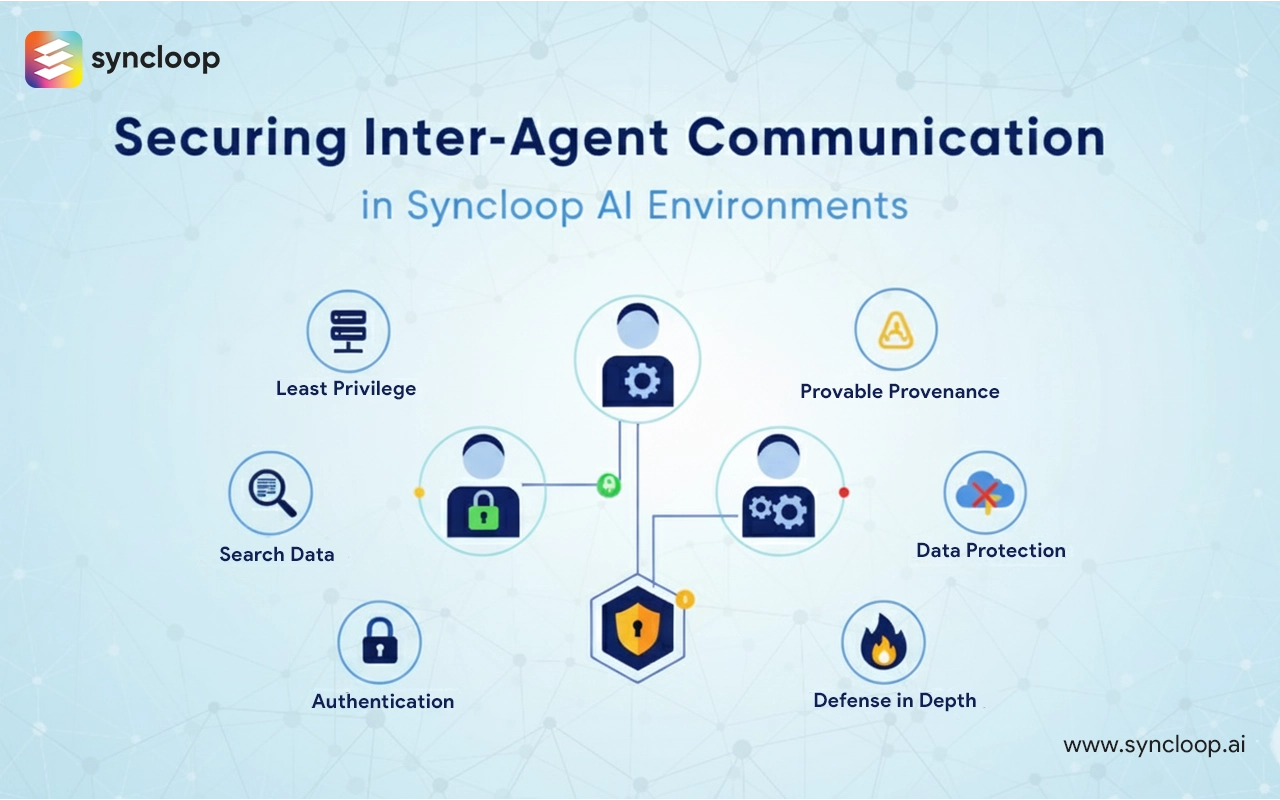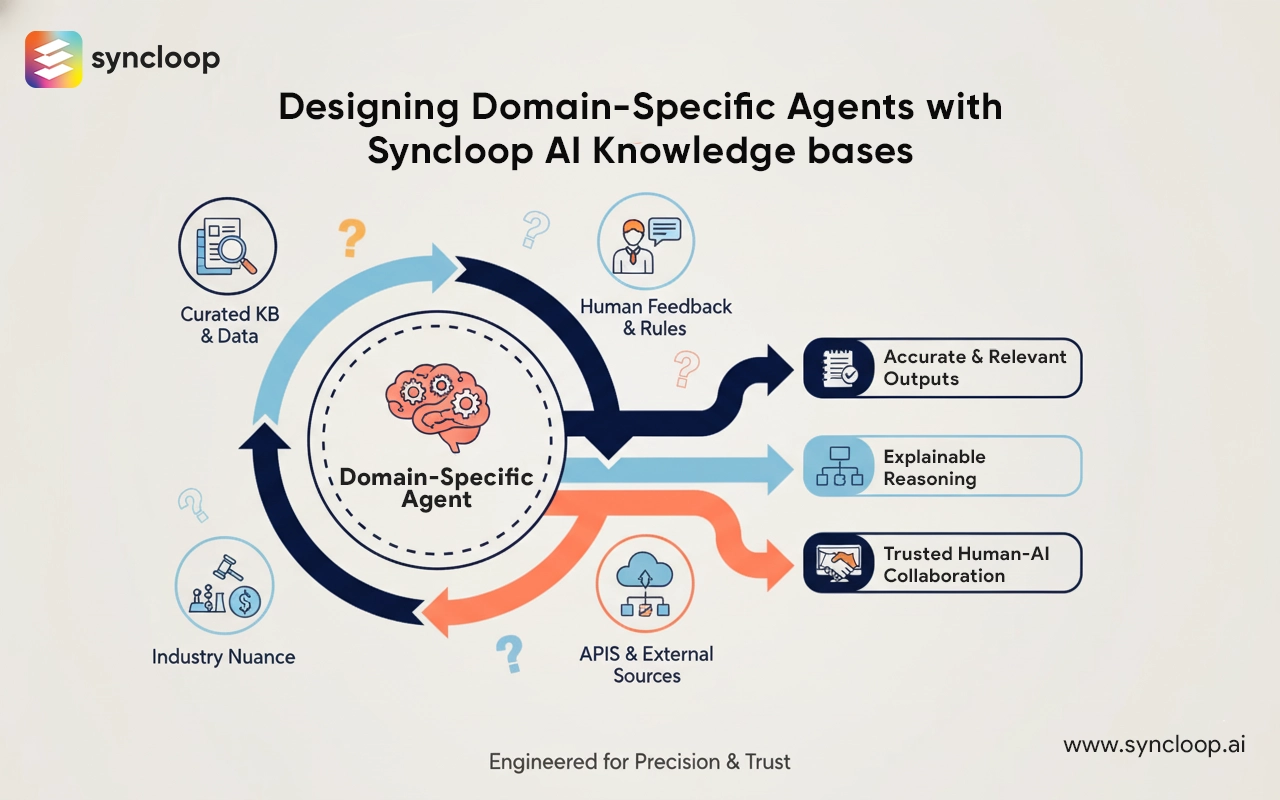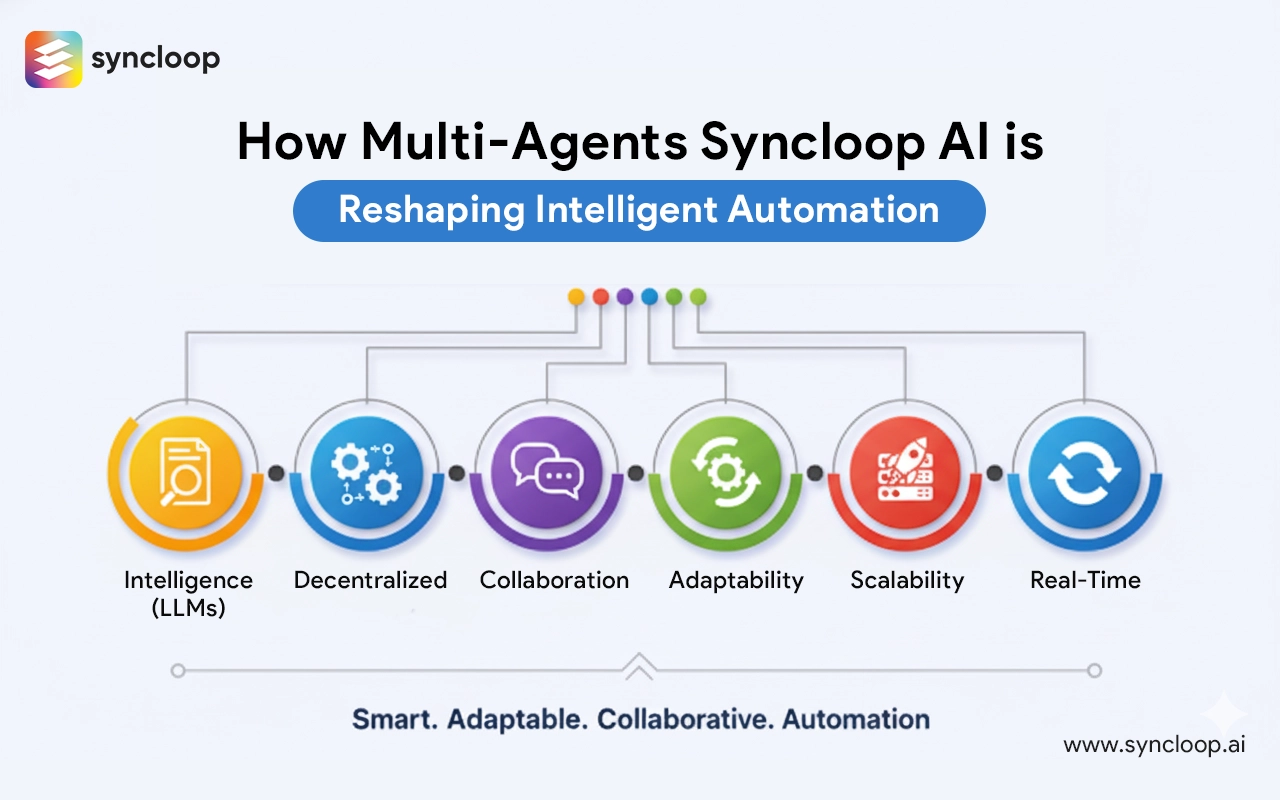Building Reliable RAG-Driven Agents with Syncloop AI
Posted by: Jennifer Lee | October 25, 2025

In the rapidly expanding world of artificial intelligence, enterprises are increasingly demanding accuracy, explainability, and reliability from their AI systems. While Large Language Models (LLMs) have shown immense potential, they often struggle with factual correctness — a phenomenon known as hallucination. The solution lies in Retrieval-Augmented Generation (RAG), a framework that combines the reasoning ability of LLMs with the factual strength of external knowledge sources
Syncloop AI takes this concept further by embedding RAG into a multi-agent ecosystem, where specialized agents work collaboratively to retrieve, reason, and respond with precision. These agents not only enhance data-driven decision-making but also ensure that every output is contextually accurate, verifiable, and grounded in trusted information.
In this blog, we explore how to build reliable RAG-driven agents with Syncloop AI, the architectural principles behind them, and why they’re the foundation of next-generation enterprise intelligence.
The Challenge: From Generative Power to Reliable Intelligence
Generative AI has revolutionized how we create, automate, and interact with information. Yet, one limitation persists — traditional LLMs are only as good as the data they were trained on. They can generate fluent, convincing text, but they often lack real-time access to verified knowledge.
This gap leads to hallucinations — AI confidently producing incorrect or outdated information. For enterprises, this is not just inconvenient; it’s unacceptable. Incorrect data can lead to compliance risks, financial losses, or misinformation in customer interactions.
Syncloop AI addresses this by integrating RAG (Retrieval-Augmented Generation) into its multi-agent framework. Here, intelligent agents are empowered not just to generate answers but to retrieve contextually relevant data from trusted knowledge bases, verify it, and then formulate a reliable, explainable response.
Understanding RAG in Syncloop AI:
RAG (Retrieval-Augmented Generation) is an advanced architecture that enhances an AI model’s performance by combining two steps:
- Retrieval: Fetching relevant information from structured or unstructured sources like databases, APIs, or knowledge bases.
- Generation: Using that retrieved data to create factually accurate and context-aware responses.
In Syncloop AI, RAG isn’t just a single operation — it’s a coordinated process managed by multiple agents:
- The Retriever Agent identifies and collects the most relevant data from internal and external sources
- The Generator Agent processes this data to produce meaningful, human-like responses.
- The Verifier Agent checks for accuracy, consistency, and compliance before finalizing the output.
This multi-agent collaboration ensures that every piece of generated content passes through layers of verification, making Syncloop AI outputs not only intelligent but trustworthy and transparent.
The Syncloop AI Advantage: Multi-Agent RAG Orchestratio
Traditional RAG systems rely on a single model performing both retrieval and generation tasks. Syncloop AI reimagines this with a multi-agent orchestration model — each agent is specialized, autonomous, and connected through secure APIs.
This distributed intelligence brings several advantages:
This distributed intelligence brings several advantages:
- Parallel Processing Multiple agents retrieve and analyze data simultaneously, reducing latency.
- Error Reduction A dedicated verifier agent ensures factual and logical correctness.
- Explainability The reasoning chain is transparent, making it easier to trace how an answer was generated.
- Adaptability Agents can evolve independently as new data sources or models are integrated.
- Scalability Enterprises can scale the number of retrievers or generators based on workload demands.
Through this approach, Syncloop AI ensures that intelligence scales with reliability — not complexity.
Architectural Overview of a RAG-Driven Agent Workflow in Syncloop AI
A typical RAG-driven workflow in Syncloop AI follows a well-orchestrated pattern that ensures reliability and accuracy.
- Query Understanding: When a user or system sends a request, a Context Analyzer Agent interprets intent and identifies what data is needed.
- Information Retrieval: A Retriever Agent connects to Syncloop’s integrated knowledge bases, document repositories, or external APIs to fetch the most relevant data fragments.
- Data Processing and Generation:The Generator Agent synthesizes this data into meaningful, contextually aligned outputs using LLM reasoning.
- Validation and Verification:A Verifier Agent cross-checks generated responses against retrieved facts to ensure consistency and truthfulness.
- Output Delivery:The final result is sent through an Orchestrator Agent, ensuring the response aligns with enterprise guidelines, tone, and compliance standards.
This architecture enables RAG-driven workflows that can adapt, scale, and operate autonomously across enterprise ecosystems..
Knowledge Bases: The Backbone of Reliable RAG Agents
A RAG system is only as strong as the data it retrieves. In Syncloop AI, Knowledge Bases (KBs) serve as the foundation for reliable information retrieval. These KBs can include:
- Internal enterprise documents, databases, and archives
- Real-time APIs for updated data
- Industry-specific data repositories for compliance and standards.
Syncloop AI’s Knowledge Management Layer allows enterprises to create, organize, and version their knowledge bases dynamically. Agents can retrieve data in milliseconds, ensuring that every output remains current, factual, and enterprise-aligned
Moreover, these knowledge bases are governed by access controls, ensuring that agents only retrieve information from authorized and trusted sources, maintaining compliance and data security at all times.
Ensuring Reliability through Verification and Feedback Loops
One of Syncloop AI’s standout features is its Verifier Agent — a safeguard that ensures the accuracy and integrity of generated content. Before an agent finalizes its output, the verifier cross-references retrieved data, checks for semantic consistency, and confirms alignment with enterprise guidelines.
Additionally, Syncloop AI introduces a feedback loop mechanism. Every agent learns from human feedback and system outcomes, improving accuracy over time. This continuous refinement ensures that RAG-driven agents don’t just operate — they evolve, becoming more reliable with every interaction.
This makes Syncloop AI a living system — one that continuously learns, validates, and perfects its intelligence ecosystem.
Building Trust Through Transparency
In enterprise environments, trust in AI output is non-negotiable. Syncloop AI integrates traceability and explainability into every step of the RAG process.
When an agent produces an output, Syncloop AI can show:
- Which sources were retrieved.
- What reasoning steps were followed.
- How verification was performed.
This level of transparency not only builds confidence but also meets regulatory and compliance requirements — particularly in sectors like finance, healthcare, and legal where auditability is essential.
Enterprise Use Cases of RAG-Driven Agents on Syncloop AI
The power of RAG-driven agents can be applied across industries, enabling organizations to automate complex cognitive workflows.
- Banking and Finance: Agents verify transaction details, detect fraud patterns, and provide regulatory reports with factual accuracy.
- Healthcare: Agents assist in diagnostics, retrieve medical literature, and generate patient summaries backed by verified data.
- Customer Support: Agents retrieve customer histories and generate contextually personalized responses in real time.
- Legal Services: RAG agents analyze case law, retrieve precedents, and draft legal opinions based on verified sources.
- E-commerce: Intelligent product recommendation agents combine retrieval and reasoning to enhance personalization
In each case, Syncloop AI ensures that the intelligence behind every decision is both explainable and verifiable.
Scaling RAG Workflows Across Enterprises
As organizations expand their AI footprint, scalability becomes crucial. Syncloop AI’s multi-agent architecture supports horizontal scaling, allowing enterprises to deploy additional retrievers or verifiers based on workload demand.
This distributed intelligence model ensures that reliability doesn’t degrade with scale — it strengthens. Each new agent contributes to the ecosystem, enriching its knowledge and enhancing its reasoning capabilities.
Furthermore, through API-driven orchestration, enterprises can easily integrate RAG workflows with existing tools, from CRMs to analytics dashboards, without disrupting existing operations.
Conclusion
The future of AI is not about generating content faster — it’s about generating content smarter and more reliably. Syncloop AI achieves this by combining the power of RAG with the coordination of multi-agent systems. Each agent — retriever, generator, verifier, or orchestrator — plays a vital role in ensuring accuracy, consistency, and trust in every output.
By empowering agents to retrieve verified data and reason intelligently, Syncloop AI transforms automation into an ecosystem of truth-based intelligence. Enterprises that adopt this approach are not only ensuring operational efficiency but also building digital trust and credibility in every interaction.
In a world flooded with information, Syncloop AI stands as the beacon of reliability — where every answer is retrieved, reasoned, and verified.
Back to Blogs







